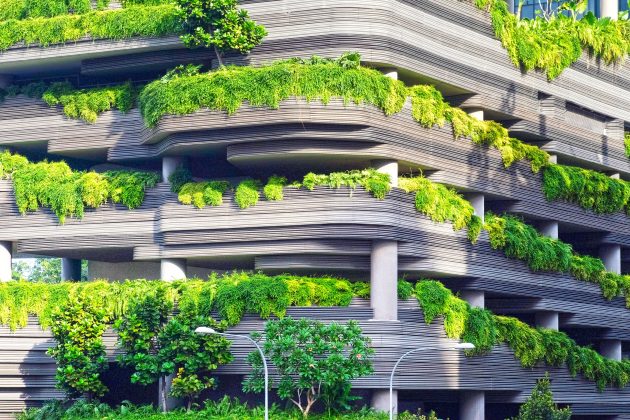
Sustainability in architecture has swiftly transitioned from a trend to a necessity. As our planet grapples with environmental challenges, the importance of eco-friendly designs has never been more pronounced.
Modern architecture must rise to this call, merging aesthetic appeal with environmentally conscious choices. Our built environment holds immense potential to make a positive impact, advocating for a greener, more sustainable future.
Understanding Sustainable Architecture
Sustainable architecture revolves around designs that minimize negative environmental impacts, much like how skilled essay writers meticulously craft their content to leave a lasting impression. At its core, this design philosophy embraces efficiency in energy use, resource conservation, and creating spaces that enhance occupants’ well-being.
The principles of sustainable architecture have profound effects. Environmentally, they reduce waste, energy consumption, and degradation. For communities, these designs foster healthier living spaces, promote local materials, and engender a deeper connection to nature. Together, they offer a blueprint for harmonious coexistence between built spaces and their surroundings.
Site Analysis & Selection
Selecting the right site is a foundational step in sustainable architecture. An environmentally friendly site minimizes adverse impacts on nature and complements the ecosystem.
Several techniques aid this selection process. These include studying the site’s natural drainage, assessing local flora and fauna, and gauging sun paths for optimal natural lighting. Through such evaluations, architects can ensure their designs not only sit harmoniously with the environment but also enhance its sustainability quotient.
Energy-Efficient Design Strategies
Harnessing renewable energy has become integral in sustainable architecture. Incorporating solutions like solar panels can significantly reduce a structure’s carbon footprint.
Moreover, energy consumption can be curtailed through effective insulation, ensuring interiors remain comfortable without excessive heating or cooling. Coupled with passive design, which maximizes natural light and airflow, energy demands plummet. By melding these strategies, designs not only become energy-efficient but also pave the way for a more sustainable architectural future.
Water Conservation Techniques
Water, a precious resource, demands judicious use in architecture. Integrating rainwater harvesting systems can significantly offset water requirements, storing nature’s bounty for later use.
Furthermore, thoughtfully designed landscapes, using drought-resistant plants and efficient irrigation, can curtail water consumption. Even the layout of a structure, optimized for water use, can make a difference. Together, these techniques ensure that every drop counts, fostering a design philosophy that respects and conserves our planet’s vital water resources.
Sustainable Building Materials
Choosing the right building materials is pivotal for eco-friendly architecture. Using recycled materials reduces waste, while local sourcing cuts down on transportation emissions. Moreover, non-toxic materials ensure healthier indoor environments and reduce harm to the planet.
The ecological footprints of materials vary widely. For instance, bamboo, a rapid-growing resource, has a much smaller footprint than hardwoods. By comparing these footprints and making informed decisions, architects can craft structures that are both environmentally responsible and aesthetically pleasing.
Innovative Waste Management
Minimizing waste during construction can have profound environmental benefits. By planning efficiently and reusing materials, construction waste can be dramatically reduced.
Post-construction, a building’s design can further support sustainability. Spaces dedicated to recycling and composting promote responsible waste disposal among occupants. Additionally, integrating waste segregation solutions directly into the design ensures easier and more efficient recycling. These innovative approaches not only reduce landfill contributions but also foster a culture of sustainability within the built environment.
Green Technologies and Systems
Embracing green technologies has revolutionized sustainable architecture. Green roofs and walls, for instance, offer insulation while providing urban green spaces, aiding in both energy conservation and biodiversity.
Complementing these structural innovations, the inclusion of energy-efficient appliances and fixtures further curtails a building’s energy consumption. LED lighting or energy-star rated appliances, for example, ensure the building operates at minimal energy levels. Together, these technologies and systems shape buildings that are not only eco-friendly but also futuristic in their approach to sustainability.
Indoor Environmental Quality
A building’s interior plays a significant role in the well-being of its occupants. Optimal natural lighting not only reduces energy consumption but also enhances mood and productivity. Thoughtfully designed windows and openings can serve dual purposes: providing ample light and facilitating effective ventilation.
Air quality is paramount. By choosing non-toxic materials, harmful off-gassing is minimized. Efficient ventilation systems further ensure that indoor air remains fresh and clean. These design considerations, much like the meticulous attention of the best paper writing service, guarantee that indoor environments are both comfortable and health-promoting.
Longevity and Adaptability
In the realm of sustainable architecture, longevity and adaptability are cornerstones. Designs that endure time reduce the need for frequent renovations, conserving resources.
Moreover, as sustainability technologies evolve, buildings must be flexible to adapt. A design that can easily integrate future advancements, whether it’s a new energy solution or space-utilization innovation, ensures the structure remains relevant and eco-friendly. Thus, architects must envision not just the immediate needs, but also anticipate future shifts, crafting spaces that seamlessly meld the past, present, and future.
Conclusion
Sustainability in architecture is no longer just an option; it’s a defining pillar of modern design. As global environmental concerns intensify, the onus falls on architects to be at the forefront of eco-friendly innovations. By staying informed and embracing evolving sustainable practices, architects can shape a built environment that harmonizes with nature, crafting a legacy of responsible and impactful design.















